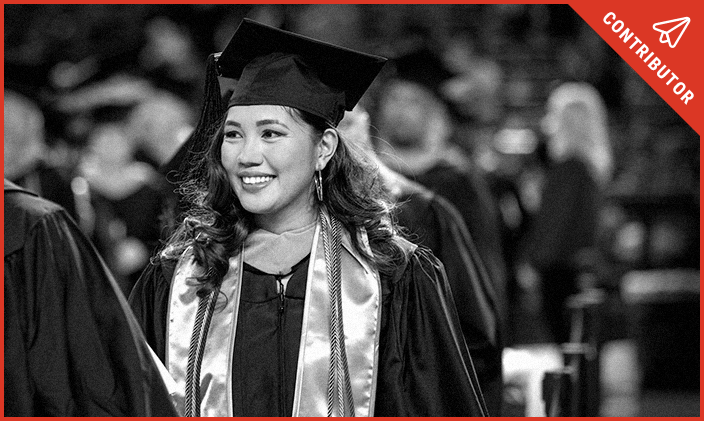Breaking the stigma around invisible disabilities
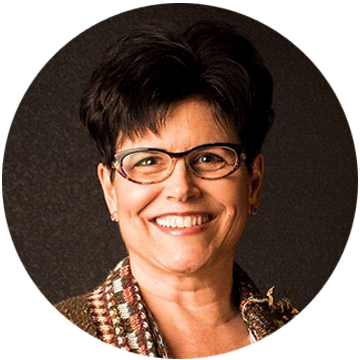
Written by Laurie Davies

Reviewed by Kelly Hermann, MSED, Vice President, Accessibility, Equity and Inclusion
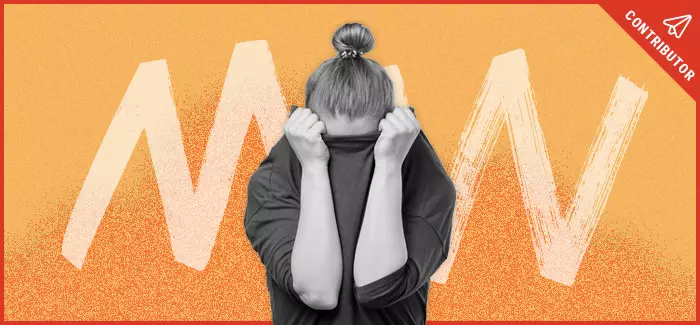
What are invisible disabilities?
How common are invisible disabilities? If University of Phoenix invited 100 statistically representative U.S. adults to its Arizona campus, up to 12 might use a wheelchair or assistive walking device. Six might wear hearing aids or cochlear implants. Almost five — those with visual impairments or blindness — might be using a white cane or perhaps navigating the campus with the help of a guide.
Those disabilities are visible.
Undetected among these guests, however, would be many hidden disabilities. In fact, according to national statistics on invisible disabilities:
- 20 would have dyslexia
- 18 would have depression
- 15 would have suffered from migraines
- 4 to 5 would have ADHD
- 2 to 3 would have bipolar disorder
“Hidden or invisible disabilities are not immediately apparent,” says Kelly Hermann, vice president of access, equity and inclusion at University of Phoenix. “But their impact on a person’s daily life activities is just as significant as those disabilities we can see.”
Invisible disabilities can range from chronic pain and fatigue to, as mentioned, dyslexia, migraines, ADHD or mental illness — and many other diagnoses that affect one’s ability to perform life activities. Hidden disabilities (as well as visible ones) can affect both how an individual does a life activity and how long it takes to do the activity.
What is an accommodation?
University of Phoenix students who have visible or invisible disabilities are encouraged to apply for accommodations, or adjustments that can be made to some aspects of the course experience to mitigate the impact of the disability. Accommodations can include:
- More time to complete assignments
- Written materials formatted for text-to-speech tools
- Captions for live or taped video sessions
Many other accommodations exist, so it’s important to ask a member of the Student Accommodations Office team about what’s available.
Unfortunately, asking is exactly the step that some students decide not to pursue — because, like it or not, disability stigma still exists in this world.
What is disability stigma?
It’s hard to ask for help with invisible disabilities. “And with adult students, sometimes there’s this feeling of ‘I want to do it myself. I don’t want to ask for help,’” Hermann says. Add to that the stigma of being labeled with a disability, and many students don’t seek the help they need for a temporary health issue or a permanent disability.
There are many examples of painful comments or realities in response to disability accommodations, including:
- A false belief that an accommodated student is helpless
- An assumption that an accommodated student is intellectually challenged
- A false belief that an accommodated student is lying, weak or incapable
- Discrimination or stereotyping
Hermann recounts one of the first students she worked with (at a different college) who was hesitant to use accommodations — a retired trucker who had a back injury that made it difficult to sit in classroom chairs. “He was hesitant when I explained all the things we could do for him. He didn’t want anyone saying he didn’t earn his degree himself,” she says.
Then, Hermann had an idea. She asked the student if he had seen students using wheeled back packs on campus. He had seen a lot of them, so she asked if using those wheeled backpacks meant the students weren’t doing the work of carrying their books themselves.
It was like a light bulb went on for him. “No, the students are still getting their books from point A to point B.” The wheels made it easier, but they didn’t do the job for them.
“The wheels are the accommodation. You’re still getting from point A to point B yourself, but you’re not using all your energy to do it, so you have the energy you need to focus on your class,” Hermann says, recalling their conversation.
How University of Phoenix can help students with visible and invisible disabilities
For students who want to apply for a disability accommodation, a link to request an accommodation is available in every course in Blackboard, the classroom management system used at University of Phoenix.
Even if your disability has not been diagnosed (e.g., it’s a recent injury or an ongoing situation you haven’t sought medical treatment for), students are encouraged to apply. “We’ll give accommodations on a temporary basis to give you some time to get an appointment with a medical provider,” Hermann says.
Once a student has filled out the accommodations form, a member of the Student Accommodations Office will reach out by phone within 24 to 48 hours to determine eligibility. “Our undergraduate classes are only 5 weeks long, so we don’t have the luxury of time,” Hermann says.
What is the line for who’s eligible?
Hermann says the standard criteria is: It depends. “We look at our students holistically, and we ask open-ended questions, such as:
- How is this disability showing up for you when you sit down to do your coursework?
- Have you tried to address how it’s affecting you?
- What has worked?
- Do you have a letter from your doctor — or could you get one — that would help us understand the manifestation of your symptoms?
Hermann acknowledges that it’s sometimes just not possible for a student to provide documentation for invisible disabilities. For example, if a student was diagnosed with a learning disability 30 years ago, the student simply may not have access to those records.
The disability accommodation process:
1. Apply  for a disability accommodation.
for a disability accommodation.
2. Connect with the UOPX intake team.
A member will call you, but you can reach them at 602-557-1157.
3. Participate in an intake interview with the Student Accommodations Office.
Share details about your diagnosis and how it affects you. Accommodation applications are assessed case by case.
Accommodations help students succeed
The data don’t lie. The average increase of 30-day retention for accommodated students at UOPX was 14.3% in 2023 (when compared with students who disclosed a disability but were not using an accommodation)*.
In other words, more students who use accommodations complete their courses and move on to the next one. “That’s a big jump. Accommodations can really be the difference-maker,” Hermann says.
In 2023, the University accommodated more than 15,000 students. The top-requested accommodation was extended time to turn assignments in without penalty.
What is the right amount of time students need?
Again, it depends.
“For some students, four days is enough, and they are able to get everything in after their class ends without needing to request an additional extension,” Hermann says. For others, the timing may be different.
In the end, Hermann encourages any student who experiences an invisible disability to find the accommodations link in the “tools and resources” section of Blackboard or simply talk to their instructor or academic counselor. Staff and faculty can start the referral system for a student who expresses that they have a disabling condition.
Will some students experience negative attitudes or perceptions after disclosing a disability? It happens, but it is increasingly rare.
“The faculty and staff at the University are committed to being the most trusted provider of career-relevant higher education for adult students,” Hermann says. “If students are thinking, I wish I had help, but I don’t want to ask, I would encourage them to call the Student Accommodations Office and learn more about their options. They don’t have to use accommodations if they aren’t comfortable, but we’d like the chance to share what other students have experienced and how we can help.”
It’s this view, Hermann says, that makes University of Phoenix an inclusive, supportive place for students with visible and invisible disabilities — a university that’s breaking the stigma around invisible disabilities and disability accommodations.
*2023 data collected by University of Phoenix as part of its accessibility initiatives.
Learn more about the Student Accommodations Office at University of Phoenix.
University of Phoenix Workplace Accessibility Report
In order to better understand workplace accessibility awareness and practices for employees with disabilities, University of Phoenix commissioned with The Harris Poll a survey of managers in information technology, education and healthcare. The survey findings illustrate an overall value of accessibility skills in the workplace fields of healthcare, education and technology.
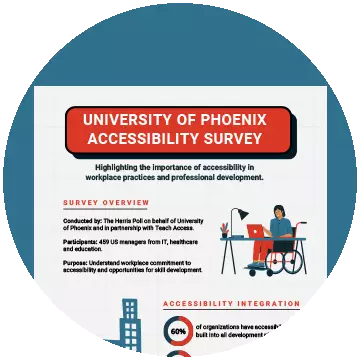
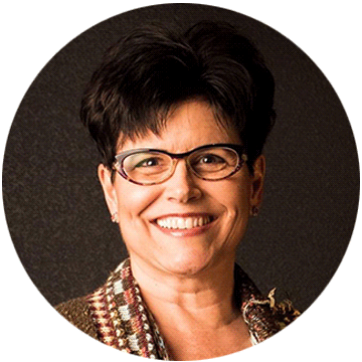
ABOUT THE AUTHOR
A journalist-turned-marketer, Laurie Davies has been writing since her high school advanced composition teacher told her she broke too many rules. She has worked with University of Phoenix since 2017, and currently splits her time between blogging and serving as lead writer on the University’s Academic Annual Report. Previously, she has written marketing content for MADD, Kaiser Permanente, Massage Envy, UPS, and other national brands. She lives in the Phoenix area with her husband and son, who is the best story she’s ever written.
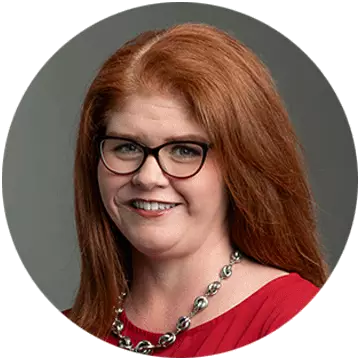
ABOUT THE REVIEWER
As Vice President, Accessibility, Equity and Inclusion, Kelly Hermann leads services to students with disabilities, digital accessibility initiatives and the Office of Educational Equity. She chairs the special interest group for online learning and distance education for the Association on Higher Education and Disability (AHEAD) and the accessibility task force for 1Ed Tech and frequently presents on the topic for AHEAD, OLC, WCET and other national organizations.
This article has been vetted by University of Phoenix's editorial advisory committee.
Read more about our editorial process.
Read more articles like this:
